As data deprecation looms, the power of retail media first-party data has been hailed as the next frontier in advertising. But applications of that data aren’t limited to digital marketing. There’s a newer (and potentially even more promising) retail media option on the horizon: in-store advertising.
While in-store ads have been a topic of discussion for marketers for years, most brands have yet to adopt them; as of 2024, eMarketer found that in-store ads make up only 0.6% of retail media ad spend. Barriers like a lack of digital advertising space installed in stores have prevented some retailers from opting into this category.
That’s all about to change. According to eMarketer’s forecast, in-store retail media spend will hit over $1 billion by 2028. A new generation of digital in-store experiences and ads is coming onto the market to change the way customers shop, from last-mile delivery services to digitized reviews.
Marketers who don’t jump on this trend now risk being left in the dust. So how can your brand get the most out of brick-and-mortar’s digital revolution?
The advantages of in-store advertising
In-store tech turns physical stores into valuable advertising space for brands through options like digital signage, video screens, audio ads, and even smart shopping carts. These ads have the potential to reach massive audiences; despite the ecommerce revolution, more than 80% of shopping still occurs in person.
Major physical retailers see huge foot traffic numbers: Walmart, for example, has an average of 194.2 million unique in-store visitors every month. Even better, those in-store shoppers include the coveted younger demographic. In-store audiences overindex for 18- to 49-year-olds, who make up the majority of shoppers. Gen Zers especially value IRL experiences and the instant gratification of making purchases at physical stores.
Reaching audiences in stores can make more of an impact than getting to them in digital spaces. Shoppers in physical stores are already in the headspace to buy–they’re browsing, looking for new brands, and ready to make purchases, so your products are more likely to make it into their consideration set.
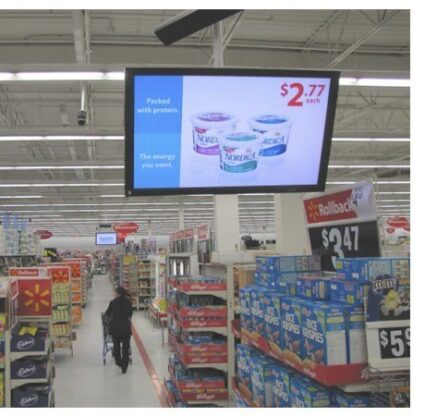
Source: Sixteen:Nine
Those customers are also paying attention when they’re in a physical space. Second screening isn’t as much of an issue when your audience is standing in the paper towel aisle as it is when they’re at home on the couch, so your ads are more likely to make an impression rather than getting tuned out.
In-store advertising also has benefits for non-endemic brands, which are sometimes left out of the retail media conversation because they don’t sell at particular retailers. Advertising in physical stores provides better contextual signals for brands to take advantage of, with factors like time, day, season, and more helping to predict responsiveness to these non-endemic ads.
Getting attention: digital and audio in-store advertising
When you think of in-store ads, you’re probably thinking of digital media in the aisles. This is the best-known ad type for a reason; there are lots of effective ways to reach customers via TV walls, self-checkout lanes, end caps, kiosks, between-aisle signage, and more. There are even options outside the store with experiences like digital signage at gas pumps.
These ads are a great way to reach shoppers with eye-catching, high-quality creative because massive physical audiences walk by them. They’re also close to the point of purchase, giving them extra power to convert.
If you’re ready to invest in some digital ads, you might want to start with on-shelf and video displays. American shoppers were most likely to frequently notice brand displays on shelves (43%) and video ads on TV screens (37%), according to Path to Purchase Institute.
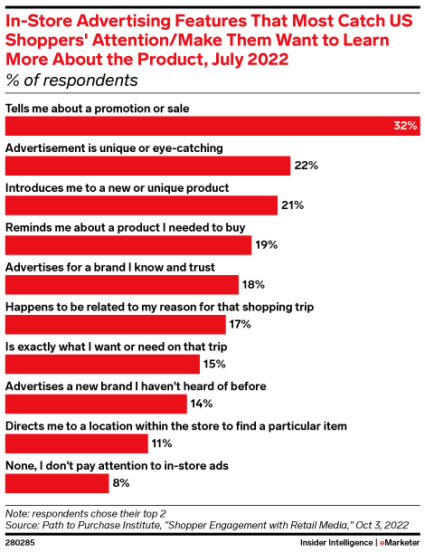
Source: eMarketer
You can also explore audio ads, which can help drive brand awareness without getting in the way of the shopping experience with intrusive physical ads. Since many brands can record these ads in-house, audio can be a great, relatively low-lift way for businesses to dip their toe into physical store ads. But you should keep in mind that it can be tough to measure the effectiveness of audio ads because there’s no way to directly tie customer behavior back to them.
While options at many stores are currently limited, startups like Veeve, Stingray, and Grocery TV are working to introduce smart carts, end caps, audio ads, and more, which means more inventory will likely be opening up soon.
Shaping the shopping experience: wayfinding, mobile apps, and more
While more traditional in-store ads might aim to avoid impacting the customer experience, there are also new options coming on the scene that are looking to reshape shopping.
One example is wayfinding tools, which help shoppers find products more quickly. Wayfinding can function via digital signage, apps, or voice assistance that helps customer navigate the aisles without needing to hunt down a store associate. Unlike some of the more intrusive aspects of the newly digital store, these technologies seem to be generally popular with customers: they provide a better customer experience that increases basket sizes and improves loyalty. Assistance like this also could encourage bigger hauls by recommending related products.
Online reviews may also be coming to an aisle near you with on-shelf ratings. 37% of retailers plan to adopt product information systems, according to a survey from Elastic Path and CMSWire Research. These tools can provide helpful product information to shoppers right at the shelf when they might otherwise be looking up ratings on their phones to make purchase decisions.
Giving customers more certainty that products they’re looking at are a good value can encourage them to buy more in store, rather than going home to do research later. It also reduces the risk of returns, since the buyer has a better idea of what they’re getting before hitting the register.
Smartphones are already a part of most shoppers’ experiences, but they will become even more integrated into the newly digitized store. Buyers can use apps to use loyalty cards, access click-and-collect programs, compare prices, and more.
Mobile apps are also a great place for brands to advertise in-store, albeit indirectly, since users are so often using their phones while shopping. At Target, for example, 75% of customers browse on the store’s app or website while shopping in person, with even higher adoption among Gen Z shoppers.
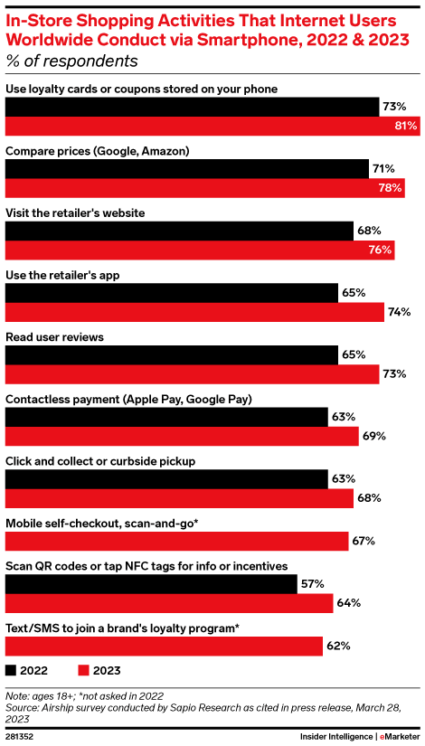
Source: eMarketer
Checking out: rapid delivery and cashier-less checkout
Digitization doesn’t stop at the end of the aisles; stores are increasingly offering digital options in the checkout line and beyond. Cashierless checkout options like Amazon’s Just Walk Out give shoppers a fast, seamless shopping experience–while collecting first-party data. Because these autonomous checkout solutions need to identify the customers at entry and track them throughout the store, they gather information on those users as they shop and buy in-store.
Last-mile delivery options like Instacart, Shipt, and DoorDash are also helping retailers compete with ecommerce giants like Amazon and Walmart by providing quick, convenient local delivery. If consumers can be tempted by these offerings, physical retailers can offer new and better advertising options to brands with local brick-and-mortar locations.
Some retailers, like Walmart and Kroger, even offer sample programs, adding product samples to pick-up and delivery orders. This gives brands the opportunity to track which customers got their products and take note of their purchasing behavior after receiving them.
If you’re thinking about making the leap into brick-and-mortar ads, consider testing into lower-lift ad options like audio ads or showcasing your most eye-catching creative on digital endcaps or displays. If those perform well, then your team can shift your strategy to include some of the fresher and more experimental advertising options coming our way in the next few years.
The new age of the digital-first physical store is upon us, and marketers who adopt early have a chance to claim a big advantage over brands sticking to other forms of retail media.
Looking to adjust to the new age of media? Check out our white paper, From Silos to Synergy: Harnessing the Power of Media Convergence, for all the strategies your brand needs.


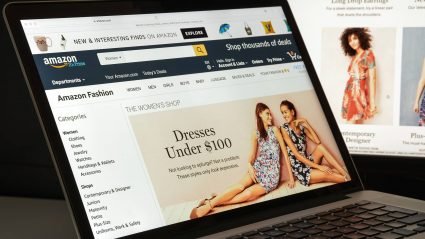

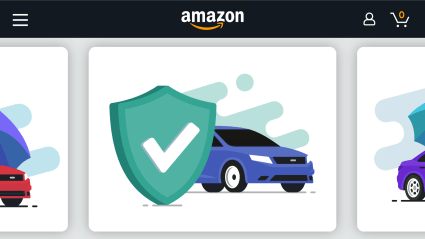

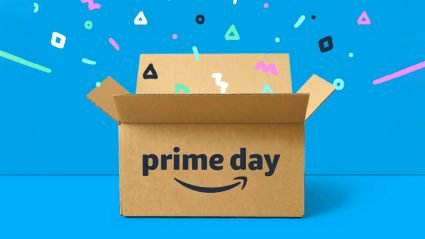
Responses